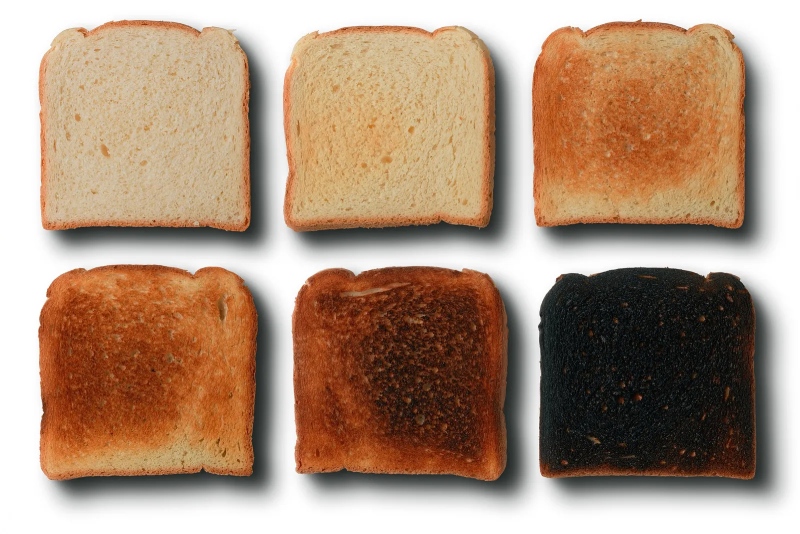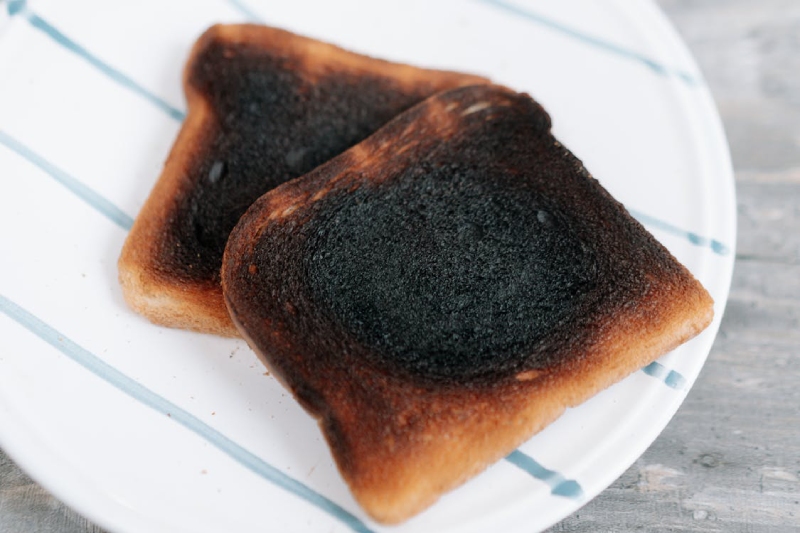We’ve all been there: that moment of horror when you reach for your toast and discover a charcoal briquette instead of a golden slice. The question arises – is slightly burned toast a dietary disaster, or can we salvage the situation?
The Chemistry of Burned Toast
The browning we associate with toast is a result of a chemical reaction called the Maillard reaction. This reaction creates the characteristic flavor and aroma of toasted bread. However, when bread gets too hot, another reaction takes place – the formation of acrylamide.

The Health Risks of Acrylamide
Acrylamide is a chemical found in certain foods, including burned toast, french fries, and coffee. Studies in animals have suggested a link between acrylamide consumption and an increased risk of some cancers. However, it’s important to note that these were animal studies, and the exact risk to humans is still under investigation.
The Benefits of Burned Toast
While the potential risks of acrylamide shouldn’t be ignored, burned toast isn’t entirely devoid of benefits. Here’s a breakdown of the nutritional value of one slice of whole-wheat toast (both lightly toasted and burned):
- Calories. Lightly toasted – 70 calories, Burned – Minimal difference (unless a significant portion is inedible).
- Carbohydrates. Lightly toasted – 14 grams, Burned – May be slightly reduced due to burning off some starches.
- Fiber. Lightly toasted – 2 grams, Burned – May be slightly reduced.
- Protein. Lightly toasted – 3 grams, Burned – Minimal difference.
- Vitamins and Minerals. Lightly toasted – Contains small amounts of B vitamins and minerals like iron, Burned – Heat can degrade some vitamins, particularly B vitamins.
As you can see, the calorie difference between lightly toasted and burned toast is negligible. However, burning can slightly reduce fiber and vitamins.

Mitigating the Risks of Burned Toast
Here are two simple ways to minimize acrylamide formation in your toast:
- toast at a lower temperature – aim for a light golden brown instead of a deep brown or black color;
- don’t overcook – keep an eye on your toast and remove it from the toaster as soon as it reaches your desired level of browning.

Expert Opinions and Research Findings
The European Food Safety Authority (EFSA) has established a tolerable daily intake (TDI) level for acrylamide. This means that consuming acrylamide below this level is not expected to pose a health risk. However, some experts recommend minimizing acrylamide intake as a precaution.
Ongoing research is crucial to definitively understand the impact of acrylamide on human health.
Conclusions
Burned toast isn’t necessarily a dietary villain, but it’s wise to be mindful of acrylamide formation. By following simple tips like lowering the heat and avoiding over-toasting, you can enjoy your toast without compromising your health. Remember, a balanced diet is key, so if you do indulge in a slightly burned piece occasionally, don’t stress!





